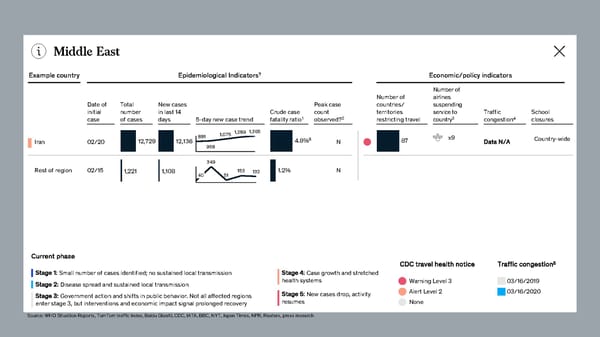Middle East Example country Epidemiological Indicators7 Economic/policy indicators Number of Number of airlines Date of Total New cases Peak case countries/ suspending initial number in last 14 Crude case count territories service to Traffic School 1 2 3 4 case of cases days 5-day new case trend fatality ratio observed? restricting travel country congestion closures 1,075 1,289 1,365 Iran 02/20 12,729 12,136 881 4.8%6 N 87 x9 Data N/A Country-wide 958 349 Rest of region 02/15 1,221 1,108 40 51 153 132 1.2% N Current phase CDC travel health notice Traffic congestion5 Stage 1: Stage 4: Small number of cases identified; no sustained local transmission Case growth and stretched Stage 2: health systems Warning Level 3 03/16/2019 Disease spread and sustained local transmission Stage 5: Alert Level 2 03/16/2020 Stage 3: New cases drop, activity Government action and shifts in public behavior. Not all affected regions resumes None enter stage 3, but interventions and economic impact signal prolonged recovery Source: WHO Situation Reports, TomTom traffic index, Baidu QianXi, CDC, IATA, BBC, NYT, Japan Times, NPR, Reuters, press research McKinsey & Company
 COVID-19 Facts and Insight Page 29 Page 31
COVID-19 Facts and Insight Page 29 Page 31